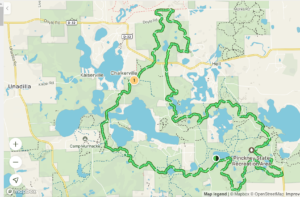
The Michigan Department of Agriculture and Rural Development (MDARD) is asking people to be on the lookout for spotted lanternfly, an invasive insect with the potential to seriously affect Michigan’s agriculture and natural resources.
This insect could damage or kill more than 70 varieties of crops and plants including grapes, apples, hops and hardwood trees.
To date, spotted lanternfly has not been detected in Michigan.
First found in the United States in 2014 in southeastern Pennsylvania, spotted lanternfly has been spreading rapidly across the nation. Infestations have been confirmed in Delaware, Virginia, New Jersey, Maryland and West Virginia.
Spotted lanternfly causes direct damage by sucking sap from host plants and secreting large amounts of a sugar-rich, sticky liquid called honeydew. This honeydew and the resulting black, sooty mold can kill plants and foul surfaces. The honeydew often attracts other pests, particularly hornets, wasps and ants, affecting outdoor recreation and complicating crop harvests.
“Spotted lanternfly could negatively impact our grape industry,” said Robert Miller, invasive species prevention and response specialist for MDARD. “But it also has the potential to damage stone fruits, apples and other crops in Michigan’s fruit belt as well as important timber species statewide.”
Spotted lanternfly egg masses resemble old chewing gum, with a gray, waxy, putty-like coating. Hatched eggs appear as brownish, seed-like deposits. Spotted lanternfly nymphs are wingless, beetle-like and black with white spots, developing red patches as they mature.
Adults are roughly 1 inch long. Their folded wings are gray to brown with black spots. Open wings reveal a yellow and black abdomen and bright red hind wings with black spots transitioning to black and white bands at the edge.
“Prevention and early detection are vital to limiting the spread of spotted lanternfly,” said Miller. “Spotted lanternfly cannot fly long distances, but they lay eggs on nearly any surface, including cars, trailers, firewood and outdoor furniture. Before leaving an area where a quarantine is present, check vehicles, firewood and outdoor equipment for unwanted hitchhikers.”
If you find a spotted lanternfly egg mass, nymph or adult, take one or more photos, make note of the date, time and location of the sighting, and report to the Michigan Department of Agriculture and Rural Development, [email protected] or phone the MDARD Customer Service Center, 800-292-3939.
If possible, collect a specimen in a container for verification.
For additional information on identifying or reporting spotted lanternfly, visit www.Michigan.gov/SpottedLanternfly.












